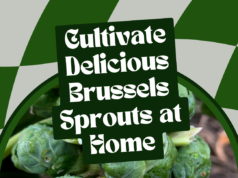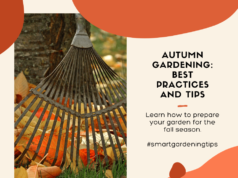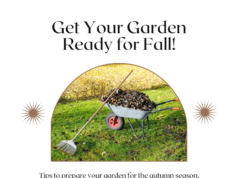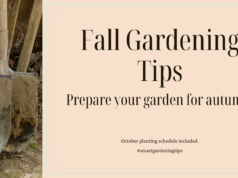
Summer is the perfect time to show off your beautiful garden, but it can also be challenging to maintain healthy plants in the scorching heat. With proper care and attention, you can protect your garden from dehydration and keep it looking its best all season long.
In this article, you will learn important tips and techniques for summer garden maintenance. We’ll discuss the benefits of hydrating plants in hot weather and provide insights on how to determine the specific watering needs of your plants. We’ll also explore different methods for proper hydration and the use of smart irrigation technology to minimize water usage.
By following these guidelines, you’ll be on your way to a lush, thriving garden that will be the envy of the neighborhood!
Key Takeaways:
- Proper watering is essential for maintaining a healthy summer garden.
- Understanding specific plant requirements and adjusting the watering regime accordingly is crucial.
- Using efficient watering practices and tools can help conserve water and promote optimal plant hydration.
- Recognizing the signs of underwatering and overwatering can save plants from damage and ultimately benefit your garden.
- Carefully assessing watering frequency for different plants is key to a thriving garden.
Understanding Specific Plant Requirements for Watering
It’s important to understand that different plants have specific watering needs. To determine the watering needs of your plants, you should first consider the plant’s natural habitat and environment. For example, desert plants like cacti require less frequent watering than tropical plants like bromeliads.
Another factor to consider is the age and size of the plant. Younger plants typically require more frequent watering than established plants, and larger plants need more water to sustain their size and growth.
Additionally, the growing medium and container size can influence the water requirements of a plant. Plants grown in smaller containers tend to dry out faster and may require more frequent watering than those grown in larger containers or in the ground.
Overall, understanding the specific needs of your plants is crucial for proper hydration and growth. By determining your plants’ watering needs, you can adjust your watering regime accordingly, ensuring that your plants receive the optimal amount of hydration.
Best Watering Methods for Different Plants
Watering your plants properly is essential for their growth and health. Different plants have different watering needs, which can be affected by various factors such as soil type, humidity, and temperature. To ensure optimal plant hydration, it is important to use the right watering techniques. Below are some of the best watering methods for different plants:
1. Watering from the Root Zone
Watering from the root zone is a preferred method for most plants, as it ensures that the water reaches the roots where it’s needed the most. This technique involves watering the soil around the plant’s base, allowing the water to seep down to the roots. To prevent runoff, gradually soak the soil and repeat until the water reaches the desired depth.
“When watering from the root zone, make sure that the soil is moist but not waterlogged. Overwatering can lead to root rot and other plant diseases.”
2. Drip Irrigation
Drip irrigation is an ideal method for plants that require consistent watering over an extended period. It involves using a drip line, which delivers water directly to the root zone, minimizing water waste and evaporation. This method is especially useful for gardens with plants that have different watering requirements, as it allows for individual adjustment and regulation of water flow.
3. Sprinkler Irrigation
Sprinklers are an effective way to water large gardens with denser vegetation. They distribute water evenly across the garden and provide adequate coverage for most plants. However, it is important to note that sprinkler irrigation can lead to the wastage of water due to evaporation and runoff. Therefore, it is recommended to water early in the morning or late in the afternoon when the temperature is cooler and the wind is calmer.
4. Hand Watering
Hand watering is suitable for small gardens or individual plants needing special attention. It involves using a watering can or hose to deliver water directly to the plant’s base. Hand watering ensures that the plant receives proper hydration, and it also allows for a closer inspection of the plant for signs of pests or diseases.
Overall, the best watering technique for your plants will depend on the plant’s specific needs and requirements. By understanding these requirements and using the right watering methods, you can ensure that your plants receive optimal hydration, leading to healthy growth and a vibrant garden.
Efficient Watering Practices to Conserve Water
Managing water efficiently in the garden is crucial in minimizing water usage and conserving this valuable resource. By adopting smart irrigation systems, you can optimize your garden’s water consumption while still maintaining healthy plants. Here are a few tips to help:
- Use a rain barrel: Place a rain barrel underneath the gutter downspout to collect rainwater and use it to water your plants.
- Water early in the morning or late at night: Water evaporates less during these times, allowing the plants to absorb the water better.
- Avoid over-watering: Over-watering can cause leaching of nutrients from the soil, leading to water wastage.
- Use smart irrigation systems: Install a smart irrigation system that delivers water to your plants based on their specific needs. This approach reduces excess water usage and promotes healthier plant growth.
By using these efficient watering practices, you can significantly minimize water usage while still maintaining healthy plants.
Smart Irrigation Systems
A smart irrigation system is an automated watering system that includes sensors to monitor soil moisture and temperature, weather data, and water flow. This technology allows for precision watering, delivering the exact amount of water that plants need while minimizing excess water usage. Additionally, smart irrigation systems can be controlled remotely, providing you with the convenience of watering your garden even when you’re away.
Signs of Underwatering and Overwatering in Plants
To keep your plants healthy and thriving, it is essential to water them properly. Overwatering or underwatering your plants can have detrimental effects on their growth and survival. It is important to understand the signs of both dehydration and overhydration to ensure your plants receive the right amount of water.
Recognizing signs of dehydration is crucial in helping you avoid under watering your plants. Drooping leaves, yellowing of leaves, and leaf drop are a few signs that indicate the plants are experiencing dehydration. Plants that are dehydrated may also have dry soil, and their leaves may feel dry to the touch.
Conversely, recognizing signs of overwatering is equally important in caring for your plants. Yellowing leaves (specifically at the bottom of the plant), wilting, and leaves that feel mushy to the touch could be indicators of overhydration. Overwatering could cause the soil to be waterlogged, leading to root rot and other health issues that could prevent a plant from growing healthily.
Remember, your plants are living organisms and depend on you to provide them the right amount of water. Pay close attention to their visual cues, and when you notice any of the signs mentioned above, take prompt action to resolve the issue.
Determining Watering Frequency for Different Plants
Watering your plants is crucial to maintaining a healthy garden during the hot summer months, but the watering needs of plants can vary significantly. Determining the right watering frequency for different plants can be a challenge, but it is critical to their survival. Here’s what to keep in mind:
- Consider the plant’s natural habitat. Plants that are native to arid climates may require less frequent watering than those from tropical regions.
- Observe the plant’s foliage and soil. If the plant’s leaves are wilting or the soil has dried out completely, it may need more frequent watering.
- Take into account the plant’s growth stage. Newly planted seedlings may need more frequent watering than established plants, while dormant or mature plants may require less frequent watering.
- Assess the weather conditions. Higher temperatures, wind, and direct sunlight can all affect how quickly the soil dries out and how frequently the plant needs watering.
- Use a soil moisture meter or perform the finger test. Inserting your finger into the soil up to the second knuckle can help you determine whether the plant needs watering. If the soil feels dry at that depth, it’s time to water.
By taking these factors into account, you can establish an appropriate watering frequency for each of your plants, ensuring that they receive the hydration they need to thrive.
Watering Techniques for Optimal Plant Hydration
Watering your plants is a crucial part of maintaining your summer garden. To ensure that your plants are getting enough water, it’s important to use the right techniques. Here are some effective watering techniques to keep your plants healthy and hydrated:
1. Water at the Right Time of Day
One of the best ways to water your plants is to do it during the cooler parts of the day, such as early morning or late evening. This allows the water to be absorbed by the soil before it evaporates in the heat of the day. Additionally, watering at night can promote the growth of fungi and diseases, so it’s best to avoid it.
2. Water Directly at the Roots
When watering your plants, it’s important to aim for the roots rather than the leaves. This allows the water to go directly to the source of the plant’s hydration. Watering the leaves can cause them to become waterlogged and lead to mold or disease.
3. Use a Soaker Hose or Drip Irrigation System
A soaker hose or drip irrigation system is a great way to water your plants effectively while conserving water. These methods allow the water to be released slowly and directly into the soil, reducing the amount of water lost to evaporation and runoff.
| Watering Method | Advantages | Disadvantages |
|---|---|---|
| Soaker Hose | Water is delivered directly to the roots, conserves water and time, reduces weed growth | May be less effective for larger plants or gardens, can be expensive to install |
| Drip Irrigation | Water is delivered directly to the roots, conserves water and time, can be customized for specific plants and soil types | May be less effective for larger plants or gardens, can be expensive to install |
| Sprinkler | Covers a large area quickly, inexpensive | Water may evaporate quickly, can lead to fungal diseases, does not deliver water directly to the roots |
4. Mulch Your Garden
A layer of mulch around your plants can help to retain moisture in the soil, reducing the need for frequent watering. It also helps to suppress weed growth and can regulate soil temperature.
By utilizing these effective watering techniques, you can guarantee optimal plant hydration and promote healthy growth in your summer garden.
Effective Use of Watering Tools and Techniques
To get the most out of your watering routine, it’s important to use the right tools and techniques. Here, we’ll discuss some effective ways to distribute water efficiently and keep your plants well-hydrated.
First, make sure that you’re using the appropriate watering tools for your plants. Potted plants, for example, may require a watering can instead of a hose. Similarly, delicate plants may be better served with a spray bottle rather than a sprinkler.
When watering larger areas, using a sprinkler system may be the most efficient option. Just be sure to time your watering schedule properly to avoid evaporation during peak sun hours. Additionally, consider investing in a smart irrigation system to further optimize your water usage.
Another technique to consider is deep watering. This involves watering less frequently but for a longer duration, allowing water to reach the roots of the plants. This method can help prevent diseases and promote healthy root growth.
Finally, always water at the base of the plant, rather than from above. This will help ensure that the water gets to where it’s needed most, rather than evaporating in the air or pooling on the leaves.
By using the right tools and techniques for your plants, you can ensure that they receive the optimal amount of water necessary for healthy growth.
Tips for Minimizing Water Usage in the Garden
Water conservation is crucial in maintaining a sustainable garden and minimizing water consumption. Here are some practical tips to help you conserve water in the garden:
- Use Mulch: Mulching helps to reduce water loss from the soil through evaporation. It also helps to regulate soil temperature and suppress weed growth. Spread a layer of organic mulch around your plants to help them retain moisture.
- Water in the Morning: Watering your plants in the morning helps to minimize water loss through evaporation. The cooler morning temperatures also allow plants to absorb water better and reduce the risk of fungal diseases.
- Choose Drought-Tolerant Plants: Consider using plants that are adapted to drought conditions. They require less watering and can still thrive in challenging conditions.
- Use Efficient Watering Tools: Some watering tools are more efficient than others. Drip irrigation systems, for example, deliver water directly to the root zone of plants, reducing water loss through evaporation and surface runoff.
- Collect Rainwater: Collecting rainwater in barrels or buckets is an excellent way to conserve water and reduce your water bill. Use harvested rainwater to irrigate your plants.
Using Smart Irrigation Systems for Water Efficiency
Did you know that using smart irrigation systems can greatly improve water efficiency in your garden? These systems can help automate watering, ensure optimal hydration levels, and reduce water wastage in the process. By doing so, you can simplify your gardening routine while preserving natural resources.
To use smart irrigation systems, you can install technologies such as soil moisture sensors, weather-based controllers, and rain sensors. These devices measure the soil’s moisture content, weather conditions, and rainfall, respectively. This information helps adjust the watering schedule and volume more accurately, preventing overwatering or underwatering.
Moreover, smart irrigation systems can be integrated with irrigation tubing, drip lines, and sprinklers. This allows you to customize the watering regimes for specific plants, ensuring that each receives the right amount of water at the right time.
The Benefits of Smart Irrigation Systems
Aside from improving water efficiency, smart irrigation systems offer additional benefits for gardeners. These include:
- Reducing water bills
- Minimizing plant diseases caused by overwatering
- Preventing soil erosion and water runoff
- Lowering maintenance costs by reducing manual watering
Integrating smart irrigation systems into your garden may require an initial investment, but the long-term benefits can pay off both financially and environmentally. It’s a smart choice for any gardener who wants to optimize their watering routine and minimize environmental impact.
FAQ
Q. Why is it important to water plants in the summer heat?
A. Watering plants in the summer heat is essential for their survival and growth. The hot weather causes the soil to dry out quickly, leading to dehydration and stress for the plants. Proper hydration helps plants maintain their physiological functions and prevents wilted leaves, stunted growth, and even death.
Q. How can I determine the watering needs of different plants?
A. Understanding the specific requirements of different plants is crucial for determining their watering needs. Factors such as plant type, soil type, stage of growth, and environmental conditions all influence how much water a plant requires. Research the specific needs of each plant species, observe their responses to watering, and adjust accordingly.
Q. What are some effective watering techniques for optimal plant hydration?
A. When watering plants, it’s best to use deep watering techniques, such as directly watering the soil around the plant’s base and avoiding wetting the foliage. This allows the roots to absorb water efficiently. Additionally, using watering tools like drip irrigation or soaker hoses can help deliver water directly to the roots while minimizing water loss through evaporation.
Q. How can I conserve water while watering my plants?
A. To conserve water, consider mulching around the plant’s base to retain soil moisture and reduce evaporation. Water your plants in the early morning or evening when evaporation rates are lower. Avoid overwatering, as it not only wastes water but can also harm the plants. Lastly, consider using a smart irrigation system that adjusts watering based on weather conditions and plant needs.
Q. How can I identify signs of underwatering and overwatering in plants?
A. Signs of underwatering include wilting leaves, dry or brittle foliage, and soil that feels dry to the touch. On the other hand, signs of overwatering include yellowing leaves, root rot, and a sour or musty odor from the soil. It’s important to assess the specific needs of your plants and adjust the watering accordingly to avoid both underwatering and overwatering.
Q. How often should I water my plants in the summer?
A. The frequency of watering depends on various factors, including plant type, environmental conditions, and soil moisture levels. It’s essential to monitor the moisture levels in the soil by checking it regularly. As a general guideline, most plants require watering when the top inch of soil feels dry, but be sure to research and understand the specific watering needs of your plants.
Q. What are some tips for minimizing water usage in the garden?
A. To minimize water usage, consider using a rainwater harvesting system to collect and reuse rainwater for watering your plants. Applying a layer of organic mulch around the plants can help retain moisture in the soil. Grouping plants with similar watering needs together can also prevent water wastage. Additionally, regularly inspect and repair any leaks or inefficient watering systems.
Q. How can smart irrigation systems help with water efficiency?
A. Smart irrigation systems use weather data and soil moisture sensors to adjust watering schedules automatically, ensuring plants receive water only when needed. By targeting the specific needs of each plant, these systems reduce water waste, promote water conservation, and optimize plant health. Consider installing a programmable irrigation controller or a drip irrigation system for better water efficiency.
Conclusion
Congratulations! You now have a solid understanding of how to care for your summer garden and keep your plants hydrated in the hot weather. By determining your plants’ specific watering requirements and using effective watering techniques, you can optimize their growth and prevent dehydration.
Remember to regularly check your plants for signs of underwatering or overwatering and adjust your watering frequency accordingly. By using smart irrigation systems and implementing water conservation practices, you can also minimize water usage in your garden.
With these tips in mind, your summer garden will thrive, and you can enjoy a beautiful outdoor space all season long. Happy gardening!
















